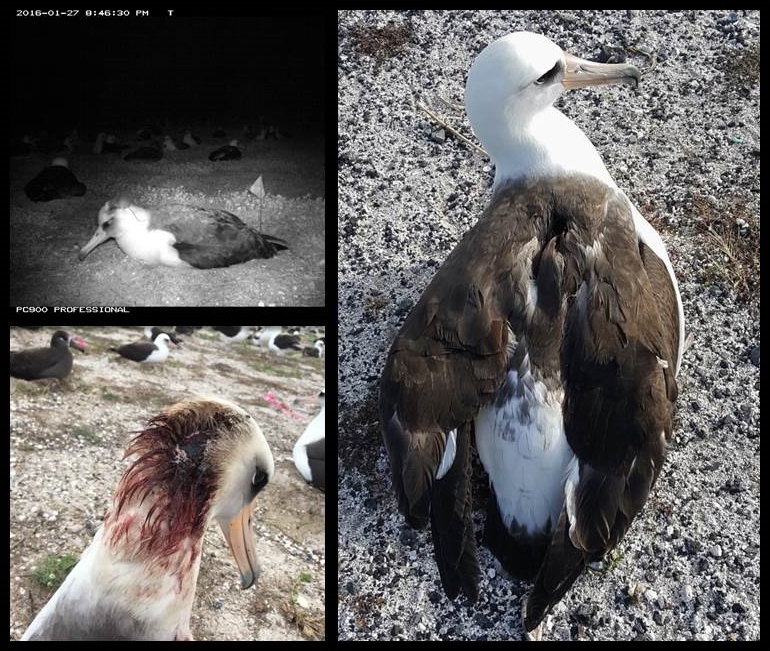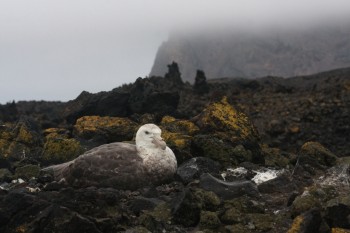Meg Duhr (Mid-Columbia River National Wildlife Research Complex, Burbank, Washington, USA) and colleagues have published in the proceedings of an international conference on island invasives held in 2017 in Dundee, Scotland on controlling House Mice Mus musculus that have been attacking and killing breeding Black-footed Phoebastria nigripes (globally Near Threatened) and Laysan Phoebastria immutabilis (globally Near Threatened) Albatrosses on Midway Atoll in the North Pacific.
The paper’s abstract follows:
“Sand Island, Midway Atoll National Wildlife Refuge (MANWR), is home to 21% of all nesting black-footed albatross (Phoebastria nigripes) and 47% of all nesting Laysan albatross (P. immutabilis) worldwide. During the 2015–2016 nesting season predation and disturbance by non-native house mice (Mus musculus), here documented for the first time, resulted in 70 abandoned nests, 42 adult birds killed and 480 wounded. In the following nesting season the affected area increased, resulting in 242 dead adults, 1,218 injured birds and 994 abandoned nests. Mouse predation activities triggered a mouse control response to reduce mouse densities in the affected areas using multi-catch live traps, kill traps, and limited use of anticoagulant rodenticides in bait stations. In 2016–2017 we applied a pelleted cholecalciferol rodenticide, AGRID3 (Bell Laboratories, Madison, WI), at a rate of 20 kg/ha in all affected areas. The purpose of this study was to evaluate the efficacy of using AGRID3 to reduce mouse density and rate of mouse attacks on nesting albatrosses on Sand Island. Mouse attacks decreased and mouse abundance was reduced following rodenticide applications in the plots treated in December but changes in attack rates in the plots treated in January were not detectable and mouse abundance increased subsequent to treatment. The plots in the December treatments were much larger than those used in January and rainfall rate increased after December. A minimum size of treatment area may be necessary to achieve a reduction in injury rates in albatrosses. No deleterious effects were observed in non-target organisms. The casualties resulting from mouse predation (mostly Laysan albatross) represent a small proportion of the 360,000 pairs nesting on Sand Island. However, the risk to adult breeding albatrosses representing such a large fraction of the global population prompted the United States Fish & Wildlife Service to prioritise mouse control efforts.”
Laysan Albatrosses wounded by House Mice on Midway Atoll in 2016
Read earlier postings on Midway’s mice in ACAP Latest News, including reporting on the final Environmental Assessment for a mouse-eradication exercise on Midway.
Reference:
Duhr, M., Flint, E.N., Hunter, S.A., Taylor, R.V., Flanders, B., Howald, G. & Norwood, D. 2019. Control of house mice preying on adult albatrosses at Midway Atoll National Wildlife Refuge. pp. 21-25. In: Veitch, C.R., Clout, M.N., Martin, A.R., Russell, J.C. & West, C.J. (Eds). Island Invasives: Scaling up to meet the Challenge. Occasional Paper SSC No. 62. Gland, Switzerland: IUCN. xiv + 734 pp.
John Cooper, ACAP Information Officer, 28 March 2019

 English
English  Français
Français  Español
Español 




